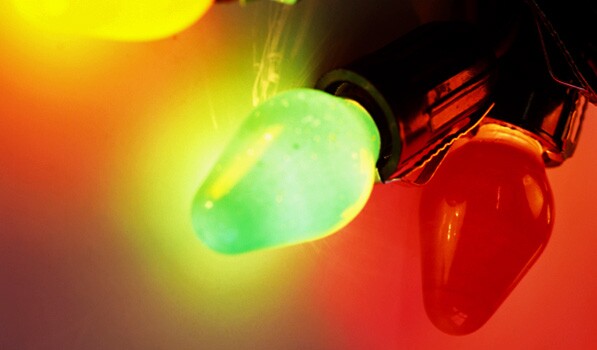It's Looking a Lot Like Christmas

I know it's the week after Thanksgiving because one of my neighbors has already strung lights from the eaves of his two-story addition. Those garlands are bright red in the dusk. The chainlink fence around his front yard hangs with white icicle lights.
The inflatables are going up, too, blossoming at night, some of them softly whirring with animations. The head of a penguin figure turns away and back again, grinning Christmas cheer. A helicopter piloted by a waving Santa Claus slowly rotates its blades. A giant snow dome sends a few flakes of something white into the air trapped inside.
Inflatables are not a new addition to the stuff with which we crowd these light deprived days, but the nylon Santas, elves, and teddy bears have been made more complicated by the ingenuity of their Chinese manufacturers.
Puffed up by blowers and suffused with inner light, the busiest inflatables whisper as I walk on my way home. They're made to be seen from a passing car, not close-up.
In the morning, the figures are collapsed on browning lawns; the light that had inhabited them leaked out. The melancholy (and probably the irony) practically slaps you in the face, but the prone figures aren't meant to be examined from the sidewalk either. Pedestrianism gives inflatables a bad name.
The winter solstice is equally collapsing our days, although they're artificially revived in the lights strung by dutiful husbands or blown up in the form of a bulging holiday icon.
Rather than pump up an inflatable, my neighbors and I might build a bonfire at the end of the block, but the AQMD has been recommending against wood fires and the air pollution they cause. I could put a candle in my front window, but the LACFD warns us about unattended flames this time of year. I could weave -- as my mother once did -- an Advent wreath of spruce boughs and light its four candles -- one each week before Christmas -- but my piety is not up to Martha Stewart's standard of craftwork.
We throw away a lot in this season, as if to make up for what we lack by too much abundance elsewhere. We make all sorts of artifice to disguise our unease. It's the season for gestures into the dark.
D. J. Waldie, author and historian, writes about Los Angeles twice each week at KCET's SoCal Focus blog.


